Modern packaging lines rely on can sealer machines (also called can seamers or can closers) to form hermetic seals on tin cans. These specialized machines use a double-seam process – mechanically interlocking the can body with the lid – to create a leak-proof joint. For example, SFXB’s FG-130 fully automatic can sealer (pictured) uses a 4-roller system and PLC touch-screen controls to hermetically seal aluminum, tinplate, plastic or even paper cans at high speed. Understanding how can sealing machines work is essential for any food, beverage or chemical manufacturer seeking to preserve product freshness and improve production efficiency.
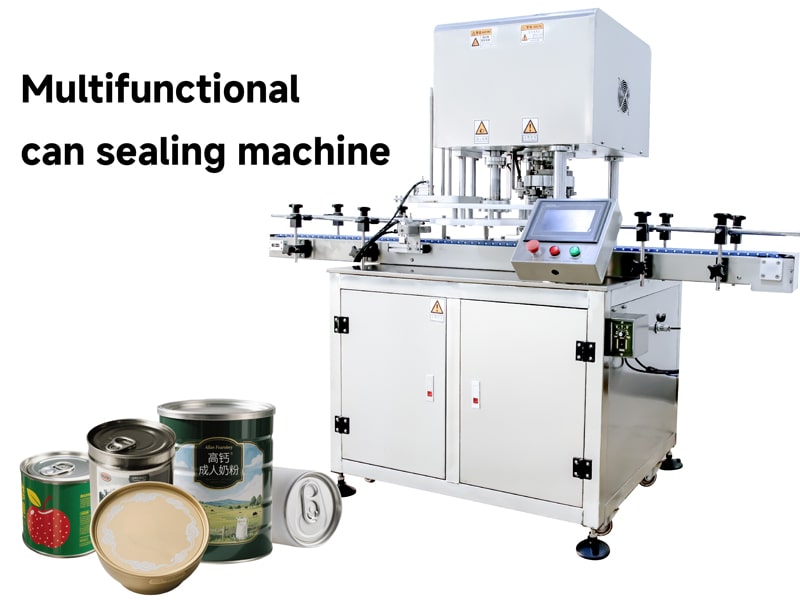
Figure:XBFG-130B Can sealer machine
What is a Can Sealer Machine?
A can sealer machine is an industrial device that affixes a lid onto a filled can to achieve an airtight, tamper-evident seal. Rather than older methods of soldering or welding lids (which were slower and could introduce contaminants), modern sealers use the double-seam technique. In this process, the machine’s sealing head presses a curled can end (lid) against the can body flange and folds (or “seams”) them together in two stages. The result is a five-layer interlock – three layers of lid material and two layers of can body – that forms a durable, leak-proof closure. This hermetic seal keeps contents (such as soda, soup or paint) fresh and protected from contaminants.
How Can Sealer Machines Work (Working Principle)
Can sealers generally operate as follows: a filled can is placed under the sealing head and a lid is set on top. A chuck (anvil) holds the lid down, and then two precision rollers engage the can end. The first operation roller folds the lid’s curled edge (cover hook) under the can body flange (body hook), forming the initial seam. Next, the second operation roller irons the seam, tightening and flattening it to the final shape. This double-roll process creates the characteristic tight double seam that is tested for leaks. Some machines keep the can stationary while the rollers rotate around it, whereas rotary seamers spin the cans themselves under multiple rotating heads. In either case, modern systems maintain precise alignment and can even flush cans with vacuum or nitrogen before seaming to further protect quality (as in the FG-130 model).
Types of Can Sealer Machines
Can sealers range from simple manual units to advanced automated systems:
- Manual Can Sealers – Tabletop or foot-operated units that require an operator to place lids and crank or press to seal. These are low-cost, low-output solutions for small-batch or home use. (They are also called canning sealer machines in hobbyist contexts.)
- Semi-Automatic Can Sealers – Machines where the operator supplies lids and presses a footswitch or button for each seal. Typically one can is sealed at a time. These offer higher consistency and speed than manual sealers while still requiring human input. They often use non-rotary designs (the can stays stationary) to prevent spills when sealing liquids.
- Fully Automatic Can Sealers – Large, conveyor-driven machines with multiple seaming heads. These systems feed cans and lids automatically and seal continuously, requiring minimal operator intervention. High-speed lines may use 4, 6, or even 12 rotary seaming heads to achieve thousands of cans per hour. Automatic can sealers are ideal for big production volumes in beverage, food and industrial canning plants.
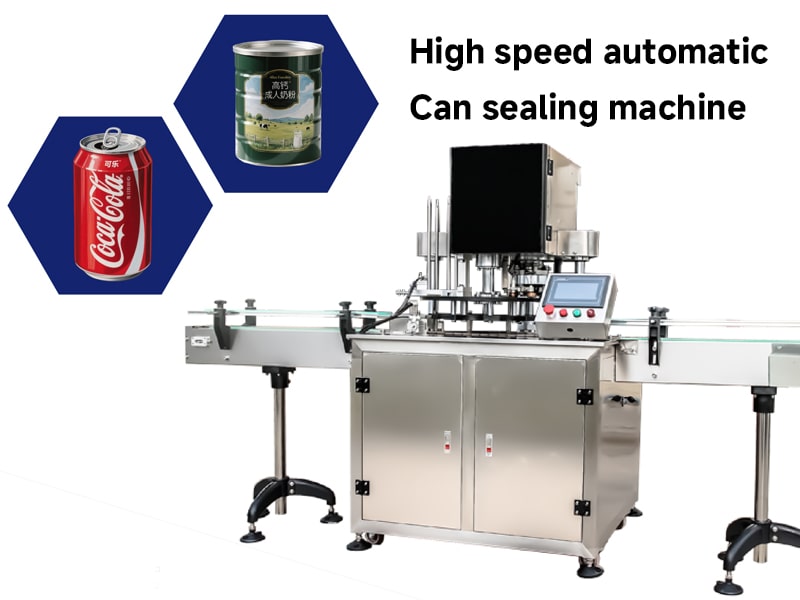
Figure:XBFG-130E High Speed Automatic canning sealer machine
Each sealer type is often referred to by industry names like can seamer, tin can sealing machine, or can closer machine. The key differences are throughput and automation: manual sealers handle just a few cans per hour, while full-auto machines can hermetically seal hundreds to thousands of cans per hour.
Key Features and Components
Modern can sealing machines share several important design features:
- Multi-Head Roller System: Many advanced sealers (like the FG-130) use four pressure rollers per head to apply uniform sealing force around the lid. This four-roller design yields tight, consistent double seams that meet international packaging standards.
- PLC & Touchscreen Controls: Programmable logic controllers (PLCs) and color touchscreens allow easy setup of can diameter, seam height, and other parameters. Operators can save recipes and quickly switch between product lines with minimal downtime.
- Robust Construction: Sanitary stainless steel (often SUS 304) frames and guards protect product purity. Heavy-duty components (like Japanese-grade SKD31 mold-steel rollers) are engineered for millions of sealing cycles.
- Automated Sensing and Safety: Sophisticated machines include “no-can/no-lid” sensors and automatic stop functions to prevent jams or damage. Fault-detection systems can halt the line if a can or lid is missing or misaligned.
- Fast Changeover: Quick die-change mechanisms and hand-crank height adjustments allow operators to switch can sizes (diameter or height) in minutes. This flexibility is crucial for multi-product facilities.
These components together ensure a can sealer’s performance: consistent sealing pressure, user-friendly operation, durability, and low defect rates (often quoted as <0.1% for cans).
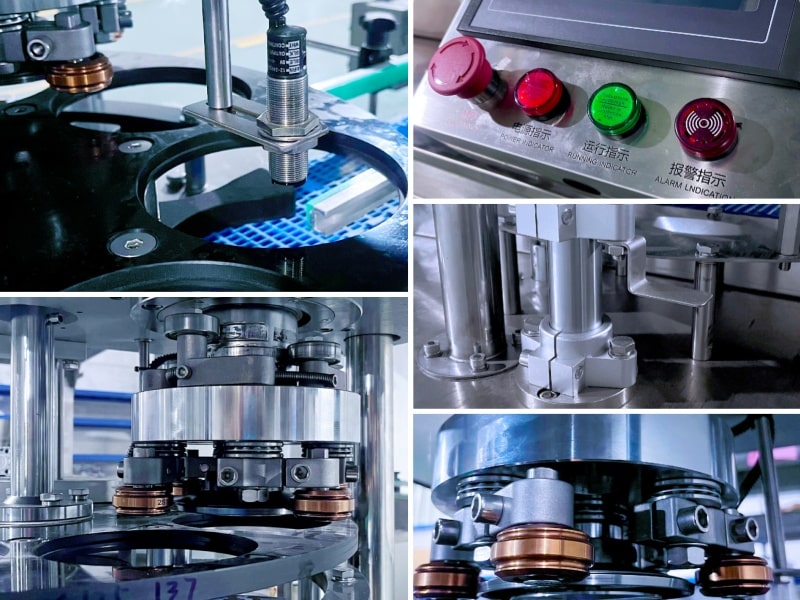
Applications of Can Sealer Machines
Can sealing machines are used wherever products are packed in metal (or similar) cans. Typical applications include:
- Food & Beverage: Canned foods (soups, vegetables, pet food, sauces) and drinks (sodas, juices, beers) rely on double-seam sealing for preservation. For example, beverage plants use high-speed soda can sealers that can handle the massive daily production volumes.
- Chemical & Industrial: Paints, oils, greases, and chemicals often use steel cans which must be sealed tightly to prevent leaks and contamination. Can sealers adapted for heavier-gauge cans ensure safety during shipping and storage.
- Pharmaceuticals & Cosmetics: Some ointments, creams or powders are packaged in small cans. Can seamers with sanitary designs (easy-to-clean) are used to maintain hygiene and sterility.
- Specialty Packaging: Novel materials like paper cans (e.g. for powders or pet treats) are also seamable with specialized sealers. Multilayer cans and composite containers can be sealed by machines equipped for different lid materials.
In short, any industry that packages products in metal or composite cans can leverage can seamer machines to improve shelf life and product quality.
Benefits of Using a Can Sealer Machine
Investing in a quality can sealer machine offers multiple advantages:
- High Productivity: Automatic sealers dramatically increase throughput. They can seal hundreds or thousands of cans per hour, meeting high-demand schedules without sacrificing quality. (Even semi-auto machines outpace hand sealing by a large margin.)
- Consistent Seal Quality: Machines apply precise, repeatable pressure and timing. This consistency minimizes leaks, spoilage and rejects. In contrast, manual sealing can vary significantly by operator. One industry article notes that proper can seamers ensure uniform, leak-proof seals which is critical for carbonated beverages and perishable foods.
- Versatility: Modern can sealers can accommodate a variety of can types and materials. A single machine can often switch between aluminum beverage cans, tinplate food cans, PET/plastic cans or even paper cans with the right tooling. This flexibility means one seamer can service multiple product lines.
- Labor and Cost Savings: Automated sealing reduces manual effort. With high-speed machines, one operator can oversee a line instead of multiple staff hand-seaming cans. This lowers labor costs and reallocates workers to tasks requiring supervision or decision-making.
- Reduced Waste and Scrap: Well-designed seamers minimize mis-seams and spillage. Because the can is held stationary (or carefully rotated), lids align perfectly and contents stay in place, avoiding material loss. Fewer sealing errors means less product waste and higher overall yield.
Overall, can sealer machines improve efficiency, quality control, and profitability for manufacturers. They enable businesses to scale up production without a proportional increase in labor or defects.
Choosing the Right Can Sealer Machine
Selecting an appropriate can sealer involves matching machine capabilities to production needs. Key factors include:
- Throughput Requirements: Determine your production speed. Small shops might only need semi-auto machines (10–30 cans per minute), while large plants often demand multi-head automatic sealers (several hundred/minute).
- Can Dimensions and Materials: Verify the sealer’s acceptable diameter and height range. For example, XueBa’s FG-130B model covers cans 40–130 mm in diameter. Ensure the machine can handle the lid and can materials (steel, aluminum, PET, etc.) you use.
- Automation Level: Decide how much automation is needed. Fully automated lines (with conveyors, feeders, and PLC logic) require more capital but save on labor. Semi-automatic machines are cheaper but need an operator at each station.
- Sealing Quality and Standards: Choose a machine with proven sealing performance (tight double seams per industry standards). Look for features like multi-roller heads and adjustable seam gap. Reputable suppliers will provide seam quality guarantees or sample testing.
- Space and Integration: Check the machine’s footprint. Automatic sealers often form part of a production line (with fill and label stations). Ensure there’s space and the proper conveyors to integrate the sealer.
- Support and Service: Work with manufacturers that offer strong pre- and post-sale support. For example, XueBa provides custom design assistance, training videos, manuals and global engineering support for new sealer installations. Good service can reduce downtime and simplify maintenance.
Before purchasing, it’s wise to review case studies or request a factory acceptance test. A trusted supplier should help you verify that the machine meets your can sealing requirements.
Maintenance and Safety Considerations
To keep a can sealer running smoothly: regularly clean the sealing head and chuck to remove debris and product residue. Lubricate moving parts and check roller tooling for wear. Many modern machines include graphical maintenance guides on their panels to remind operators of routine tasks.
Safety features should include guarding around moving components and emergency stop buttons. Built‑in sensors (no-lid/no-can detectors) not only protect the machine but also prevent operator errors. Training staff on proper machine use and lockout/tagout procedures is essential. When set up and maintained correctly, can seamers run reliably for millions of cycles – for instance, FG-130 sealer rollers are rated for over 5 million operations.
Conclusion
A can sealer machine is an indispensable part of any modern canning line. By understanding how these machines work and what features they offer, businesses can select the right model to improve product preservation and efficiency. Automatic sealers like the FG-130 shown above demonstrate the high-end capabilities now available – from four-roller precision to PLC control and ultra-low defect rates. Whether sealing soda cans or steel paint cans, a quality can sealer delivers consistent, hermetic seals at high speed, boosting both safety and profitability.
10 FAQs for “Guide to Can Sealer Machine”
What is a can sealer machine and how does it work?
A can sealer machine is equipment that forms an airtight, double-seam closure by mechanically interlocking the can body and lid using operation rollers. The first roller folds the lid curl under the can flange, and the second irons and tightens the seam to ensure a leak-proof seal.
What types of can sealer machines are available?
There are three main types:
● Manual sealers, operated by hand—ideal for small batches or cottage-scale operations.
● Semi-automatic sealers, where an operator places the can and triggers sealing—better for medium throughput.
● Fully automatic (rotary) sealers, which feed and seal cans continuously using multi-head systems for high-speed production.
What are the advantages of using a can sealing machine?
Using a can sealing machine brings benefits like faster production speeds, consistent high-quality seals, versatility across materials (tin, aluminum, PET, paperboard), reduced labor costs, and minimized waste from sealing errors and product spillage.
Which industries commonly use can sealer machines?
They’re widely used in food and beverage, chemical, pharmaceutical, cosmetics, and agriculture sectors—especially where airtight sealing is crucial for preservation, safety, or shelf life.
What are the major components of a can sealer?
Key parts include:
● Seamer head (chuck) – holds the lid during sealing
● Base plate or turntable – supports the can body
● Operation rollers (first & second) – fold and seal the seam
These components ensure proper mechanical alignment and sealing integrity.
What is the difference between rotary and non-rotary can seamers?
● Rotary machines rotate the can during sealing with multiple heads—ideal for high-speed needs.
● Non-rotary machines keep the can stationary—better suited for liquid products to avoid spillage and for delicate containers.
How does a can sealer differ from a can capping machine?
A can sealer crimps and seals a lid onto a can (airtight double-seam), whereas a capping machine applies screw-on, snap-on, or crimped caps—typically used for bottles and jars.
How should you maintain a can sealer machine?
Regular maintenance includes cleaning the seaming head and rollers, lubricating moving parts, adjusting tooling for different can sizes, and ensuring a clean environment. Proper upkeep extends machine longevity and ensures consistent sealing performance.
What common problems occur and how can they be resolved?
Typical issues:
● Cut seams due to excessive roller pressure—remedy by loosening roller settings.
● False seams from defective lids—inspect and replace poor-quality lids.
● Conveyor or mechanical breakdowns—replace or repair damaged components promptly.
Do can sealer machines need industry certifications?
Yes, to ensure safety, quality, and regulatory compliance, can sealers often adhere to standards like cGMP, ISO, and CE certifications to meet industry manufacturing and safety requirements.
| References: | |
| 1. | Can seamer ——Retrieved from:Wikipedia |
| 2. | A Guide to Can Defects and Basic Components of Double Seam Containers ——Retrieved from:Association of Food and Drug Officials |
| 3. | How Cans Are Sealed: Double Seaming Process Guide ——Retrieved from:Industrial Physics |


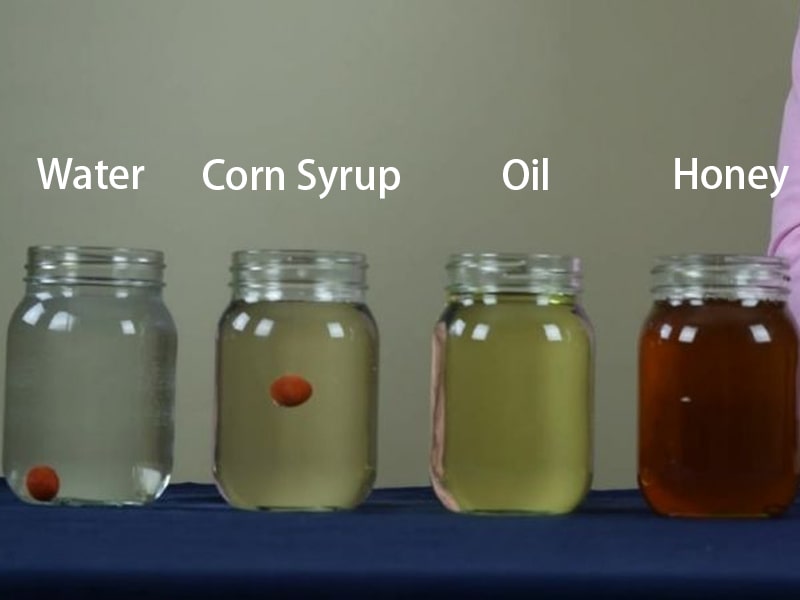
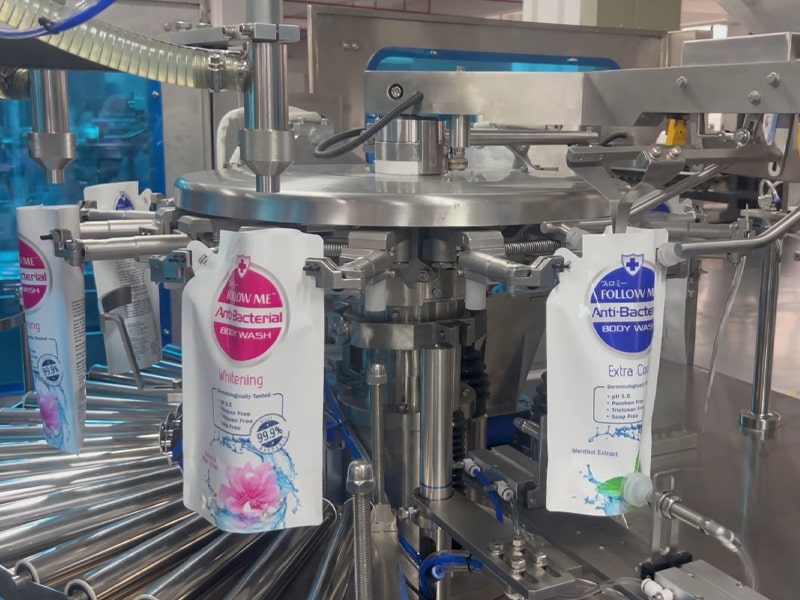


Comments